The fisher darted through the trees from one overgrown field to another. The narrowest sliver of moon had set: a perfect night for hunting. Three hours later, just before midnight, it bounded back the way it had come, fresh prey dangling from its mouth. Two hours after that, a coyote trotted over the same path, sniffing the ground where the fisher had passed. The time was 1:45 a.m. on September 1, 2016. One hundred miles away, I was sound asleep.
So how do I know all of this? Because I’d tied a game camera to a tree in just the right place.
Last summer, as a graduate student researching 130 acres of privately owned land in southern Vermont, I got to peer into the lives of the animals on the property – in one spot, at any rate.
On a warm, sunny day in midsummer, a bobcat strolled to the edge of the field and paused, perhaps eyeing the farmhouse in the distance where I stayed during my site visits; then it changed course to follow the band of trees along an ephemeral stream edging the meadow.
A black bear turned up with her cub on the fourth of July and snuffled around for a few minutes. A fisher, a rare visitor for the first two months of camera trapping, became a regular in the fall, appearing on 24 different days: bounding, sniffing, pouncing. Between June and October, the camera took over 800 photographs of wildlife, capturing 18 species of mammals and birds, from an elusive long-tailed weasel to a wide-eyed American woodcock.
Use of camera traps, as biologists call them, for wildlife research has exploded in the last decade or so, and they have become far more reliable and affordable, even allowing video footage. Still, a high-end Reconyx camera used by scientists with plenty of funding might cost over $500. I didn’t have access to fancy equipment. I borrowed a friend’s $100 Browning camera instead, and it worked fine. In fact, it succeeded beyond my wildest dreams.
I set my camera up at the intersection of two habitat types: a trail between meadows running through a wooded corridor. An obvious north-south path through a gap in the band of trees – actually an earthen bridge over a culvert – was appealing to animals cruising between the two open fields, as a predator on the move might do.
The band of trees itself, a hedgerow running east-west, offered cover to other animals who were journeying from one swath of forest to another. I recorded the same species using both these routes throughout the season – bear, raccoon, fisher, and bobcat sometimes sped through the gap, other times crossed it as they traveled along the stream.
Surprisingly – given that, as my department chair likes to say, “ecologists quantify the obvious” – very little research has analyzed exactly where best to place a camera in order to maximize the number of species detected. Biologists seem to pick locations based on common sense – not typically a trusted commodity in science. Research on camera placement has instead focused on determining the best way to mount a camera at a chosen spot.
Photo Gallery--CLICK ON LINK ABOVE TO GO TO ARTICLE-AT BOTTOM
OF ARTICLE ARE THESE AND MANY OTHER PHOTOS OF THE WILDLIFE MENTIONED
Some general rules: A stout tree trunk, one that will not sway in the wind and set off the camera, makes a good mount. In a place without a mount, use a pole or stake, but keep in mind that some animals could be wary of obvious foreign objects. The camera should sit lower than you might think, at the height of the core body mass of the animals you’re most interested in photographing or filming – not more than a foot or so off the ground, if you want to get fishers as well as moose.
Leaves or tall grass growing in front of the camera can twist in the breeze and trigger thousands of empty photos or videos, so clear out these plants and loose branches after you’ve mounted the camera. Even the rising or setting sun can cause false triggers; avoid pointing the lens directly east or west.
Aiming the camera matters as much as locating it. Scientists trying for individually identifiable images of animals’ bodies, say to capture a distinctive stripe or scar, must face their camera traps perpendicular to the trail. If you’re trying to get the most pictures of wildlife, point the camera down the trail at an oblique angle, which gives the subjects of your photographs more opportunity to trigger the camera. Most cameras have a “walk test” feature, so you can get down on your hands and knees and pretend to be an animal walking past; a light flashes when you’ve triggered the sensor. These infrared sensors aren’t perfect. Pictures of canine rear ends crop up throughout my collection, because coyotes and foxes sometimes trot by too fast for the camera to respond in time. Even so, I enjoyed learning to identify animals by the tips of their tails.
Some animals overstay their welcome, triggering many hundreds of photos. To avoid a gigabyte’s worth of pictures of deer munching twigs in the same spot, set a delay between photographs. Even five seconds between shots can prevent a flood of images representing slight variations on the same theme. Although a memory card can record thousands of photos or hours of video, looking through all of them can be daunting.
As I sorted through my images, I searched for patterns. I wondered about that fisher who appeared over and over in the same spot. A state biologist who looked at the pictures identified it as a male. Why did he suddenly show up and stick around in the fall? Young male fishers disperse in autumn to claim their own territories. Perhaps this fisher settled in the area and made the path between the fields part of his hunting routine.
Speculating about why the animals behave as they do might be the most interesting part of camera trapping. The photographs offer more than simply an inventory of what animals live on our land; they give us insights into animal behavior.
But the camera does not record such behavior entirely passively. I haven’t addressed baits or scent lures here, mostly because I believe that the right location beats an artificial attractant for the most natural photos. But remember that, even without bait, photographing wildlife remotely is like measuring an elementary particle: you can’t observe the animals without the risk of changing their behavior.
The camera is an unfamiliar object in their territory, and they usually know it’s there. Again and again, as I scroll through the 800 photos I obtained at my study site, I see animal faces staring into the lens: a fox dashing past, looking back over its shoulder; a family of turkeys gathered around the camera, then one chick lingering behind in apparent fascination after the others have moved on; 64 pictures in a row, over the course of seven minutes, of a doe walking back and forth in front of the camera, approaching it, bending down to peer at it closely, leaving, circling back for another look, clearly baffled as to what this strange contraption could be. Her bewilderment makes for some entertaining photos. But it’s not just an event I’ve recorded; it’s one I’ve created.
Sonia DeYoung is a recent graduate of the University of Vermont’s Field Naturalist program. She currently works for the Lake Champlain Basin Program.
-----------------------------------------------------------------------------------------
Finding the Best Trail Camera In 2017 – Reviews and Comparison of the 14 best cameras available today(click link above to review all of them)
#1 choice-Stealth Cam G30 Triad Armed 8mp Trail Camera
 The Stealth Cam G30 is one of the best trail cameras you can go for and it gets our highest rating with an impressive 4.7 out of 5. The camera has great video quality, is durable and it amazing when it comes to performance and battery life.
The Stealth Cam G30 is one of the best trail cameras you can go for and it gets our highest rating with an impressive 4.7 out of 5. The camera has great video quality, is durable and it amazing when it comes to performance and battery life.
It can take great pictures of either 2, 4 or 8 megapixels and can take an HD video with sound from 5-180 seconds.
Its 30 IR emitters which have a reach of 80 feet and its reflex trigger of half a second along with its advanced blur reduction technology give this camera the ability to capture images or video in amazingly fine details at any lighting condition (e.g. daylight, low light or at night) without any issues or problem.
The camera is even secured in its shell that is both sturdy yet easy to open. The port and SD card slot is strategically positioned, too, to allow easy and convenient access. It can support an SD card of up to 32GB of capacity and features password encryption to protect your data.



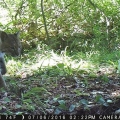





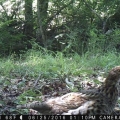
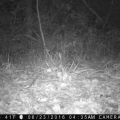


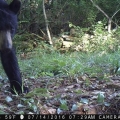

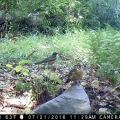
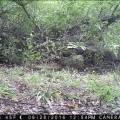
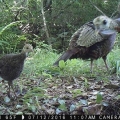









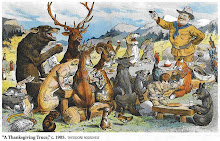
No comments:
Post a Comment